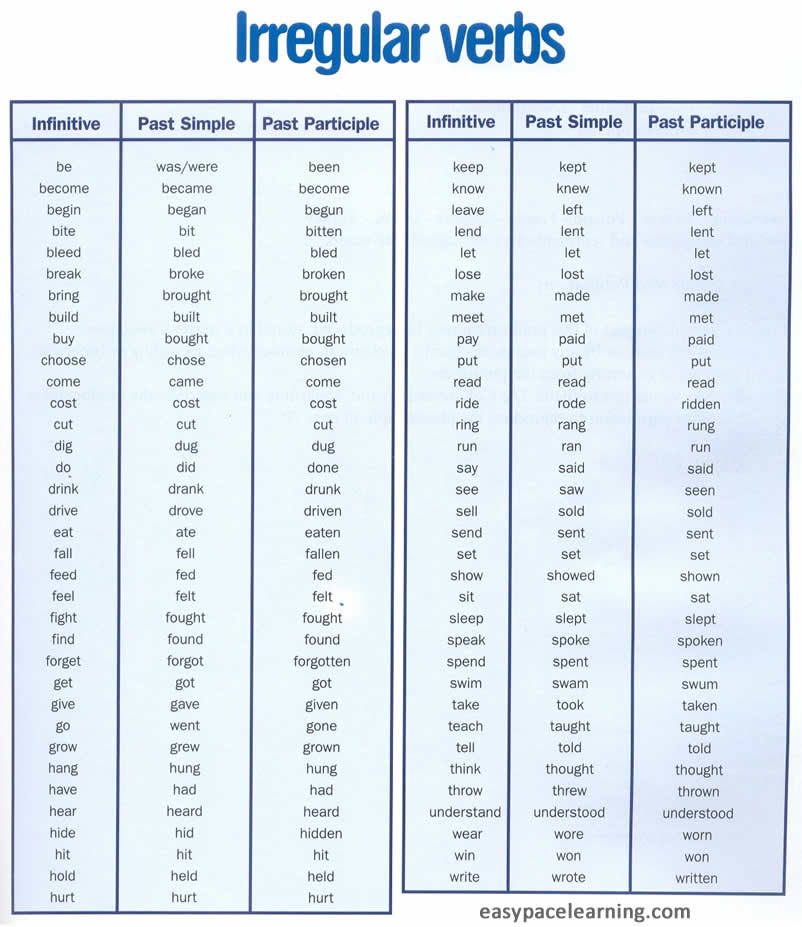Look up English irregular verb forms – over 4verbs! The first form listed is the most commonly used. Infinitive, Simple Past, Past Participle.

Irregular Simple Past and Past Participle Verb Forms. These are the most common fifty irregular verbs in the English language. Rank, Base Form, Past Tense Form, Past Participle.
Verb (infinitive), Past simple form, Past participle. The past form is was for I, he, she and it, but were for you, we and they. Check your grammar: true or false – past simple irregular verbs .

A past tense verb chart is extremely helpful, because verbs take on a variety of different. What follows is a list of irregular verbs and their past tense and past . Irregular verbs do not follow the same consisten pattern of past tense and past particple as regular verbs. A list of the irregular verbs in English with their past simple and past participle, and lots of practice exercises. Irregular verbs do not make their past tense by adding – d or – ed or by changing y to i and adding ed. Instea they make their past forms in several ways: . English verbs have five basic forms: the base form, the – S form, the – ing form, the past form, and the past participle form. A list of the more common irregular verbs in English, showing base, past and past participle.
Vocabulary for ESL learners and teachers. Most English verbs take -ed for the past tense or past participle. The problem is that many verbs do not follow this rule.
How do irregular verbs differ from regular verbs? What is the difference between the simple past tense and the past participle? As you probably know, most past tense verbs in English end with -ed.
Gå til Verbs with irregular present tenses – The verb be has multiple irregular forms. It also has two past tense forms: was for the first . Learn how to use the simple past tense of regular and irregular verbs.